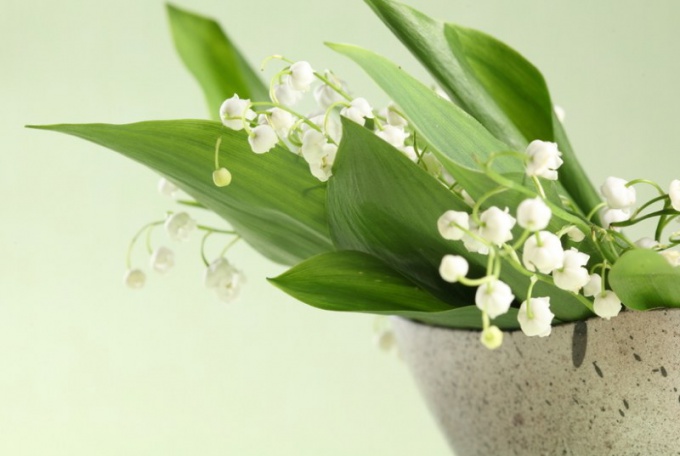Lily of the valley. General information
Lily of the valley belongs to the genus of herbaceous flowering plants. It is a flower with large oval dark green leaves with a length of about 10 cm and a width of about 5 cm Leaves grow from thin rhizomes. Fragrant flowers of Lily of the valley - white, bell-shaped, with six recurved teeth. After maturation of the flowers of Lily of the valley gives fruit in the form of a glossy, spherical berry red color with a diameter of 8 cm before the Plant bears fruit from June to July. Lily of the valley grows mainly in Europe, the Caucasus, Asia Minor, China and North America. In Russia, Lily of the valley can be found in Siberia, the far East and some regions of the European part of the country. The plant likes shaded areas in deciduous, pine and mixed forests with well-moistened soil.
Lily of the valley refers to medicinal plants. Grass, flowers and leaves to be collected, but in limited quantities, as Lily of the valley listed in the Red book. The plant is used as a choleretic, antispasmodic, diuretic, antipyretic, sedative, diuretic, vasodilator and anti-inflammatory drugs.
Toxic Lily of the valley
For man toxic all parts of the plant. To apply preparations on the basis of Lily of the valley on their own not. Only a doctor can decide whether treatment this plant. The fact that Lily of the valley contains cardiac glycosides, derivatives strofantidina and strofantidina: convallatoxin, convulsed, convallatoxin and about 10 other substances. One of the glycosides - convallarin - known irritant to the intestinal mucosa and kidneys. Others cause damage to the cardiovascular and Central nervous system and gastrointestinal tract. In mild poisoning juice Lily of the valley causes nausea, vomiting, diarrhea, headache and gastric pain. In severe poisoning possible heart rhythm disturbance, as a rule, slowing of the pulse. The defeat of the nervous system demonstrates inexplicable agitation, blurred vision, convulsions, loss of consciousness. Possible death due to sudden cardiac arrest. Particularly difficult to tolerate poisoning with Lily of the children, who are attracted by the bright red berries of the plant. At the first signs of poisoning - nausea and vomiting - should be immediately gastric lavage and an enema.
It is also seen that the plant is poisonous to birds and some animals. Birds, as a rule, do not tolerate toxic action of Lily of the valley that leads to death. But some animals eat the berries of Lily of the valley without health consequences. These include Sika deer, and elk. The smell of Lily of the valley attracts foxes. Noticed that this animal likes to hide in the thickets of Lily of the valley, breathing in his scent and eating berries.
